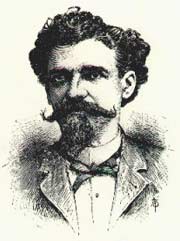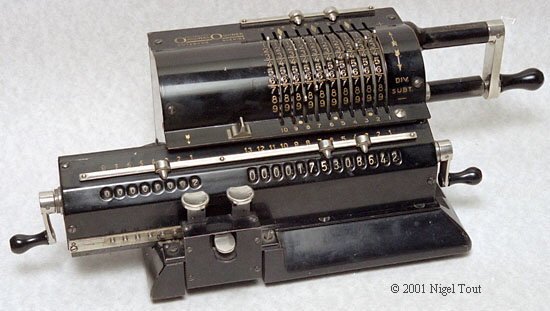A brief introduction
We all use computers in our everyday lives, it may be in the morning to check our e-mails or at the office to work.Computers turned out to be one of the most significant inventions.But did you know that the invention of computer cannot be attributed to a single person.Right from the hardware framework,the working principles to software concepts, different people have contributed all along the history and only due to that we have this highly powerful tool at our reach.But in early days of development in the Field of computing, a famous remark was made 'why would anyone want a computer at home?'
In the early days....
We started using maths first to count things/objects,back then markings or similar objects( like sticks or stones) were used for counting.Only in the modern era, humans had the need for counting in larger numbers and that to,repeatedly.Hence the higher forms of maths, the multiplication and division were found.
i)Abacus

The abacus is probably what most people associate with the phrase “ancient counting machine.” It’s not entirely ancient, schoolchildren in countries such as China and Japan are still taught how to use it for basic arithmetic operations. Interestingly, skilled abacus users can even find square and cube roots of numbers using the abacus!You probably know what an abacus looks like ,it’s a frame with vertical rods, a horizontal crossbar, and beads. It is based on the decimal system: the first vertical bar is for units, the second for tens, and so on.The device was first used in Babylon around 500 B.C., but the form of the abacus most people are familiar with was first used in China around the year 1300.
ii)Napier's rod and calculating clock
In 1614 Scotsman and mathematician John Napier invented a system of moveable rods, referred to as Napier’s Rods, which allowed for multiplication, division, and square and cube root calculation.The idea, in simple words was to move the rods and place them in boards of a certain construction, to make the necessary calculatuions.In 1623 however,an interesting device was developed by Wilhelm Schickard who lived in Germany.It was called a “Calculating Clock.” It was mechanical, and was capable of adding and subtracting six-digit numbers. It employed wheels for operations; one full revolution of the “units” wheel incremented the “tens” wheel and so on and so forth( you get the idea don't you?).What’s especially interesting here is that it warned of an overflow of digits ,i.e. whenever the digits for calculations were out of range of the capacity of the machine,it indicated by ringing a bell!
Fig. below:(Napier's rod and calculating clock)


iii)Slide Rule
Soon in 1625 William Oughtred invented the slide rule.Some are familiar with this one.People used to do the computer, hence they were called 'computers'!.It was only later that the term got applied to a electronic machine!.until then computers were the mathematicians of the automated computing systems that were invented in those years.In 1642,a French mathematician Blaise Pascal built Pascaline, a mechanical adding machine. It was limited compared to Schickard’s Calculating Clock, but the Pascaline became much more popular.So Pascaline was mentioned more often in many areas than the calculating clock.

iv)Stepped Reckoner
It was in 1671 The great German mathematician Gottfried Wilhelm von Leibniz designed a multiplying machine called the Stepped Reckoner. It could multiply numbers of up to five and 12 digits to give a 16-digit result(it was Leibniz, who along with Newton claim the founding of the great calculus).

v)J H Muller idea - "Difference Engine"
It was more than a century before any significant contribution was made to the development of computers.In 1786 J H Muller, an army officer, actually predated Charles Babbage in regards the idea of the “Difference Engine.” Muller envisioned (it was never built) a mechanical calculator for determining polynomial values using Newton’s method of differences.And by the end of the 18th century, had progressed well beyond addition and multiplication.It was in 1820 , mass production of computing device was done. Frenchman Charles Xavier Thomas de Colmar(that's a long name!) developed his Arithmometer(he like arithmometer more fancy than calculator!), the first mass-produced calculator. Its multiplicative operations followed the same general principle as Leibniz’s machine. This was the most reliable calculator developed since, and that was probably why it was mass-produced. around the 1910, this machine and most other machines of similar design continued to be sold succesfully in market.

Developments from 18th century
Now lets see about the more talked about contributors to the development of computer.In 1822,Charles Babbage designed his first mechanical computer, a prototype for his Difference Engine. Remember that Babbage invented two machines— the Analytical Engine and the Difference Engine . Both were too complex to actually be built. The Analytical Engine, which Babbage outlined, used punched cards for input.And it was not too fancy, it was a mechanical machine so it was all around wheels and steel rods.In 1832 Babbage, in collaboration with Joseph Clement, an engineer and draughtsman, produced a prototype segment of the Difference Engine, which operated on six-digit numbers, and which could tabulate quadratic polynomials.The Engine was planned to be the size of a room. The output digits, it was planned, would be punched onto a soft metal plate; a printing press could use it and so it was the the output device for the analytical machine.

The analytical engine was designed and built in different phases.In 1834 the conception and design of the Analytical Engine were completed. The program was stored on punch cards. The inventor continued work on his design for many years; the machine would operate on 40-digit numbers, which is at that time,huge.Because people were only familiar with six and sometimes 12 digit computing. He called the CPU the “mill,” and the memory he called, the “store,” which would hold a maximum of hundred numbers. Babbage’s plans for his Analytical Engine were complex: several punch card readers, both for programs and data. There was also provision for conditional jumps for making logical decisions.The meaning of the instructions would be interpreted depending on the positioning of metal studs in a slotted barrel. When the machine was last upgraded, the machine would do an addition in three seconds and a multiplication (or division) in two to four minutes.but the Difference Engine project was cancelled in 1842, because of cost problems, and because of Babbage spending too much time redesigning the Analytical Engine,it's design and parts.But the difference project did not go in vain.A lady by the name Ada Lovelace wrote to Babbage about a plan for how the Difference Engine might calculate Bernoulli numbers.This plan is regarded “the first computer program.”
All these time,upto mid 1840, the contributions towards the development of computers were either a conceptual design or a piece of hardware that would outperform it's predecessors.But it was in 1848 that concepts for calculation methods-the basis for any computer was formed. British Mathematician George Boole devised binary algebra, ans so called Boolean algebra. This was essential for a binary computer to be developed, which happened almost a hundred years after the boolean algebra was devised. If you studies a stream of education where digital electronics was a part,then you see examples of Boolean algebra all the time: the NOT and OR operators (even in Google search you can include!), “NAND” as in “NAND Flash device,” and so on.

So what is Boolean algebra?
To be simple,it’s the familiar AND, NOT, etc. that you’re familiar with—1 AND 0 equals 0, 1 OR 0 equals 1, 1 XOR 1 equals 0, and so on. Such operations are essential to logic circuit design, which are essential to higher-level building blocks like integrated circuits.
There were not only contribution from the Americans and Englishmen,In 1878 a Spaniard ,Ramón Verea came to New York City at the end of the US Civil War.He was into trade, and so he wanted to have a calculating device.Verea created a calculating machine and was granted a patent for it. There were calculators before Verea’s invention, but they all performed repeated addition operations to get a multiplication result. Verea’s contribution lay in seeing how to perform multiplication with one stroke of a lever. His machine was based on a ten-sided metal cylindrical structure.All the mechanical types of calculating machines started to adopt the Verea type of calculating systems in the early 1880s itself.


In 1885, two Americans Frank Baldwin and T Odhner, independently and simultaneously came up with a multiplying calculator that was more compact than the Arithmometer. This was not based Leibniz machine, but was a significant extension of, Leibniz’s machine .And in 1886, Dorr Felt, who used to work in a machine shop, created, in Chicago, his Comptometer( another ambiguously named machine). This was the first mechanical calculator where the data was entered by pressing keys rather than by other mechanisms such as dialling. Later in 1889 Felt went on to bring out the very first printing desk calculator.
Fig.Below:The Odhner's machine


In USA, the census of 1880, took almost seven years to complete!.This was a complete waste of time and manpower.Hence there was a need for completing the calculations such big in short time.So an employee of the census department called Herman Hollerith, borrowing Charles Babbage’s idea, used punched cards for data storage. And what might have taken longer than 10 years took six weeks!.Hollerith founded, in 1896, the Tabulating Machine Company. Which went on, in 1924, to merge with another company and later become International Business Machines known more familiarly as IBM.Due to the invention of Hollerith, he was able to make a significant mark in history, to be considered as the father of data processing.
Until the end of 1800s,I consider these as early contributions to Computer and Computing developments,The mid age of computing and modern era of computing will be posted later.!